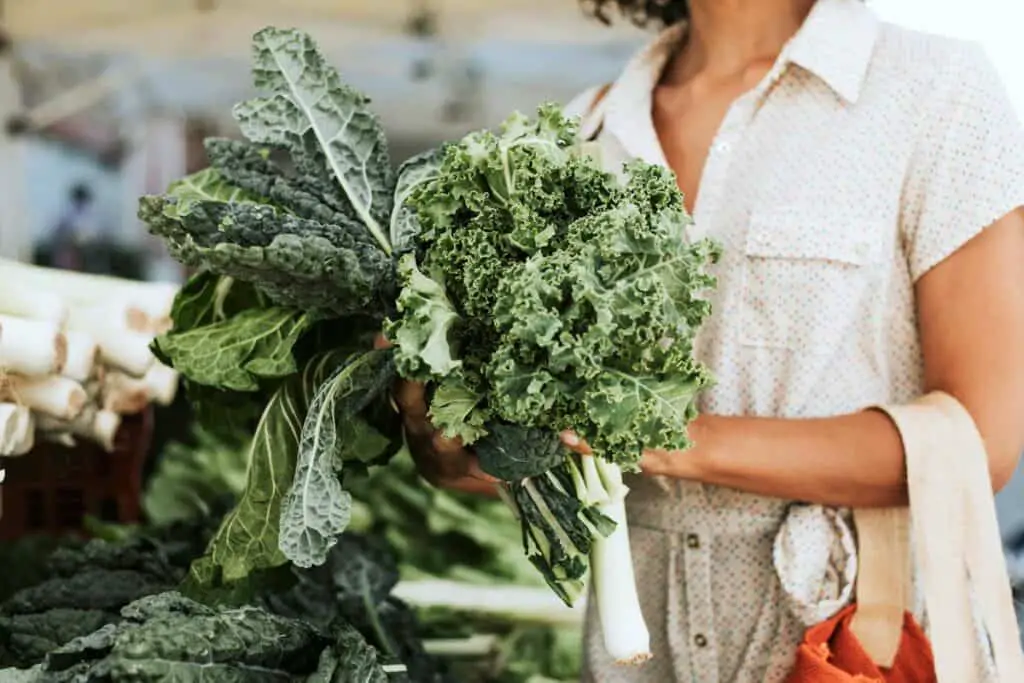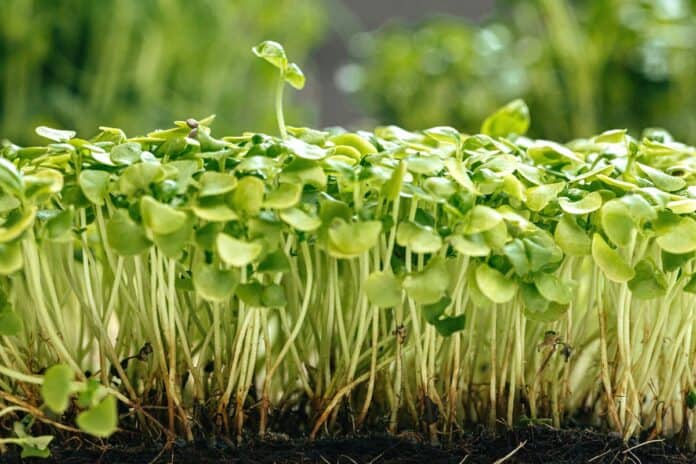Kale microgreens are known to be the most nutrient-dense superfood on the planet! They have several healthful benefits, and at the same time, low in calories. As microgreens, they hold four times the nutrient levels than the full-grown version!
What is Kale Microgreens?
Kale microgreens are the younger version of the full-grown leafy vegetable. Similar to cabbage, the leaves are very tough, and they come in different shapes. It’s one of the more popular veggies to grow and eat due to its wide span of health benefits.
As microgreens, the leaves are tiny compared to the mature veggie with its curly or straight leaves. It is a quick-growing microgreen, and you can plant your seeds and be ready to harvest after just a week. You’ll be able to enjoy eating both the leaves and stems of these superb greens.
| Growing period | 9-12 days |
| Flavor | Strong and nutty flavor |
| Growing difficulty | Easy |
| Buy seeds | Kale Lacinato seeds from True leaf Market Kale Red Russian seeds from True Leaf Market Kale Trio seeds from Amazon |
Description
Kale is a member of the cabbage family. It belongs to the same group as broccoli, cauliflower, and collards.
Kale has a long history of cultivation, and it’s known to origin in the eastern Mediterranean. People have enjoyed the health benefits of Kale since back to 2000 BCE, and it has long been popular across Europe and North America.
There are different types of kale microgreens. The most common ones are the Scotch kale with curly green leaves and white stem, and the Red Russian Kale with plain-leaf and reddish/purple stems.

General Nutrition & Benefits
Kale is jam-packed with good things and known for its many health benefits! It contains vitamins A, C, K1, and B6, as well as minerals, fiber, antioxidants, potassium, calcium, magnesium, copper, and manganese.
RELATED: The Most Nutritious Microgreens to Grow and Eat
How to Grow Kale Microgreens
It’s easy and quick to grow Kale microgreens. You don’t need to presoak the seeds before you plant them.
| Growing timeline (estimated) | |
|---|---|
| Presoak | No |
| Preferred medium | Hydroponic or soil |
| Avg. seed weight (10/20 tray) | 25 grams |
| Germination period (blackout) | Day 1-4 |
| Growth time (sunlight) | Day 5-8 |
| Harvest | Day 9-12 |
Kale grows well in both soil and hydroponic medium. You start by filling up your tray with the medium of choice and flatten it out. Sprinkle your seeds evenly across the surface. Place enough seeds to get a thicker crop but ensure that you don’t overseed. That can cause your microgreens to grow unevenly, wilt, and even mold.
Kale seeds should be kept in the dark to support the germination process (blackout period). During a few days, put your trays in a dark environment or cover them with another tray. If you are using another tray on top of the one you are growing in, you can place it in the same orientation and add some weight to it, for example, a stone or similar (around 7-10lbs). Kale tends to grow more evenly if you do this. It puts some pressure on the seedlings, and they are being pushed into the growing medium.
Keep your tray in the dark for around three days or until you see that the seeds have germinated. During the germination stage, you can give them a good mist without oversoaking them. Once the seeds have sprouted, remove the weight, cover, and bring them out in the light. Place them under a grow lamp or a place where they will get enough indirect light.
During the growth time (sunlight stage), you should continue giving them water, ideally from the bottom tray, to nourish the roots.
You will find that already after a week you can start to harvest your Kale microgreens. If you want to give them some extra length, you can keep them growing for another couple of days.
Culinary Guiding
Kale has a rich, earthy, and nutty taste. The leaves can be quite strong to eat as is, but there are many ways you can enjoy this veggie!
Mix it with your salad together with vinegar, oil and add in some nuts. It makes a great combination! You can also cook Kale and add it to your soup. Stir-fry, steam or braise it. All methods make for a tasty dish!
Kale is also great to add to smoothies. It gives a stronger taste and just makes your drinks so much more healthy!


